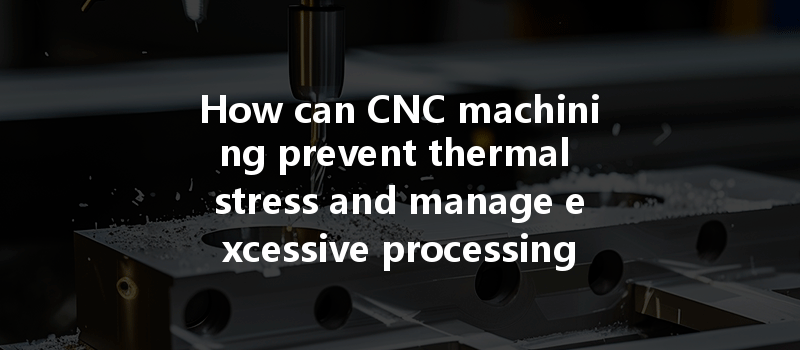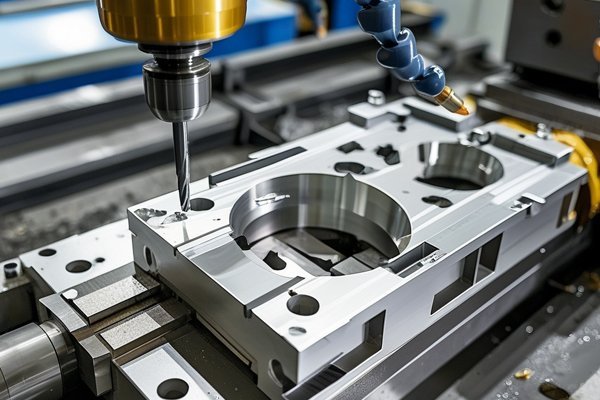Did you know that excessive heat generated during CNC machining can lead to significant defects in machined parts, impacting both quality and performance? In fact, studies show that over 50% of tooling failures can be attributed to thermal stress, which highlights the importance of managing processing temperatures in CNC machining.
In this comprehensive blog, we will explore how CNC machining can effectively prevent thermal stress and control excessive temperatures during the machining process. Covering various techniques, technologies, and best practices, we aim to provide you with actionable insights that enhance your understanding of CNC machining’s thermal dynamics.
Understanding Thermal Stress in CNC Machining
Before diving into solutions, it’s essential to comprehend what thermal stress is and why it poses a challenge in CNC machining.
What is Thermal Stress?
Thermal stress occurs when different parts of a material expand or contract at different rates due to temperature variations. In the context of CNC machining, this can lead to warping, cracking, or dimensional inaccuracies in the final product. The causes of thermal stress can be attributed to:
Understanding the origins of thermal stress enables machinists to adopt appropriate techniques to mitigate its effects.
Techniques to Prevent Thermal Stress in CNC Machining
Several methodologies and technologies can be employed to manage thermal stress effectively during CNC machining. Below, we explore key strategies that can be applied along with their benefits.
Selecting the appropriate cutting tools is crucial in managing heat generation. High-speed steel (HSS), carbide, and ceramic materials have different thermal properties. For example, carbide tools are known for their ability to withstand higher temperatures, making them suitable for cutting hard materials.
Best Practices:
Machining parameters, such as cutting speed, feed rate, and depth of cut, can significantly influence the amount of heat generated in a machining process.
a) Cutting Speed
Higher cutting speeds can result in increased temperatures due to more significant friction. However, too low of a speed can lead to increased wear on the tool.
Recommendation: Find an optimized cutting speed that balances efficiency with minimal thermal impact.
b) Feed Rate
A balanced feed rate is essential; a higher feed rate increases the volume of material removed but also generates more heat.
Recommendation: Experiment with different feed rates during initial tests to determine an optimal rate for specific materials.
c) Depth of Cut
Taking deeper cuts generates more friction and heat but alternatively, shallow cuts can prolong tool life.
Recommendation: Gradually adjust the depth of cut based on the machining demands and material characteristics.
The use of coolants is vital in dissipating heat, thereby reducing thermal stress during the machining process. There are various types of coolants available; some are water-based, while others are oil-based or synthetic.

Benefits of Coolants:
Best Practices:
Thermal compensation involves adjusting the machine settings based on temperature measurements. Some advanced CNC systems incorporate sensors that detect changes in temperature and automatically adjust machining parameters to maintain precision.
Implementation:
As industries evolve, new materials with superior thermal properties are continuously being developed.
a) High Thermal Conductivity Alloys
Alloys with higher thermal conductivities can efficiently dissipate heat, minimizing the impact of thermal stress.
Example: Copper-based alloys and certain aluminum alloys offer good thermal management.
b) Composite Materials
In some cases, utilizing composite materials can result in better thermal stability.
Recommendation: Explore the incorporation of thermally stable materials suitable for your specific machining tasks.
Regular maintenance of CNC machines plays a crucial role in minimizing thermal stress.
Best Practices:
In conclusion, managing thermal stress and excessive processing temperatures in CNC machining is critical for the production of high-quality components. The solutions outlined — from selecting the appropriate cutting tools and optimizing machining parameters to implementing coolant systems and utilizing advanced materials — can significantly mitigate the risks associated with thermal stress.
Understanding and minimizing thermal stress not only leads to improved machining performance but also enhances the longevity of tools and ensures the integrity of the final product. As technology continues to evolve, adopting these practices will remain paramount for manufacturers aiming to achieve operational excellence.
Remember, thermal dynamics play a fundamental role in CNC machining; approaching it with a strategy in mind can be the difference between precision and failure. Stay informed and proactive as you navigate the complexities of CNC machining, and remember that the health of your machine and the quality of your output start with managing thermal effects effectively.






